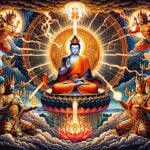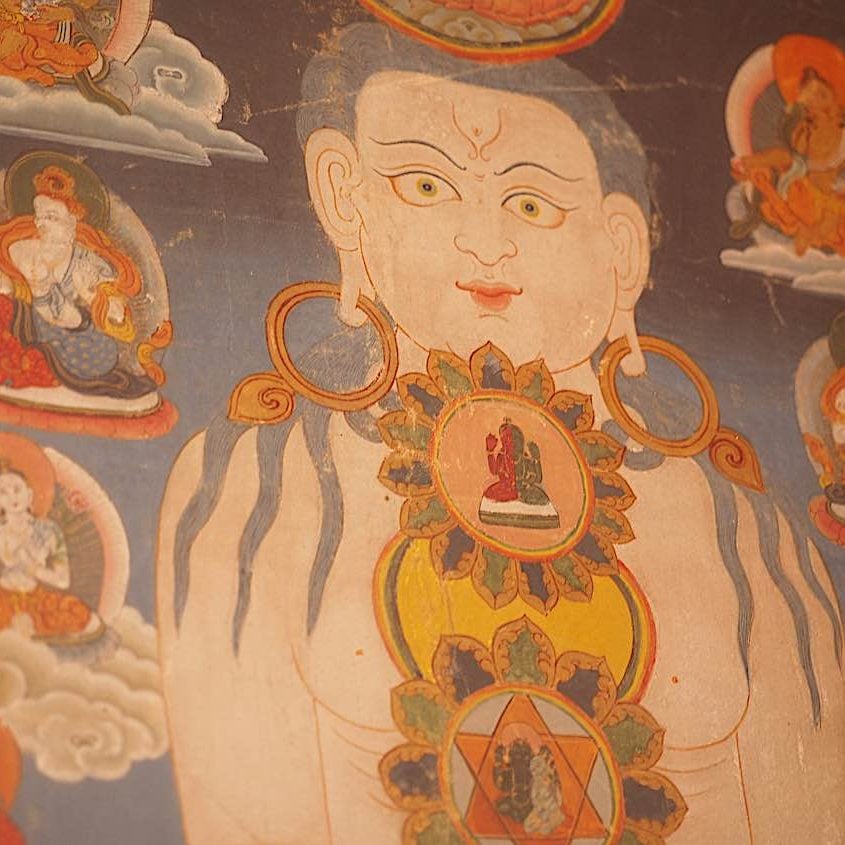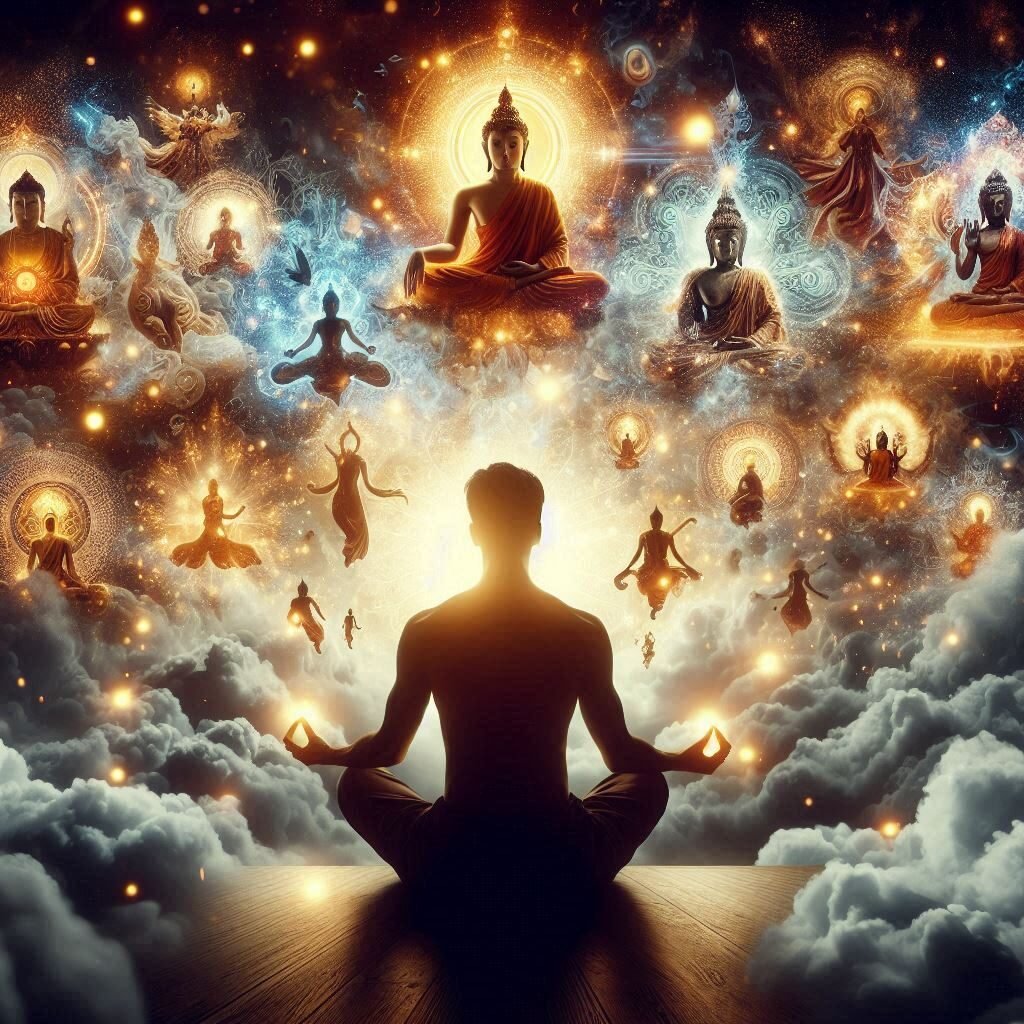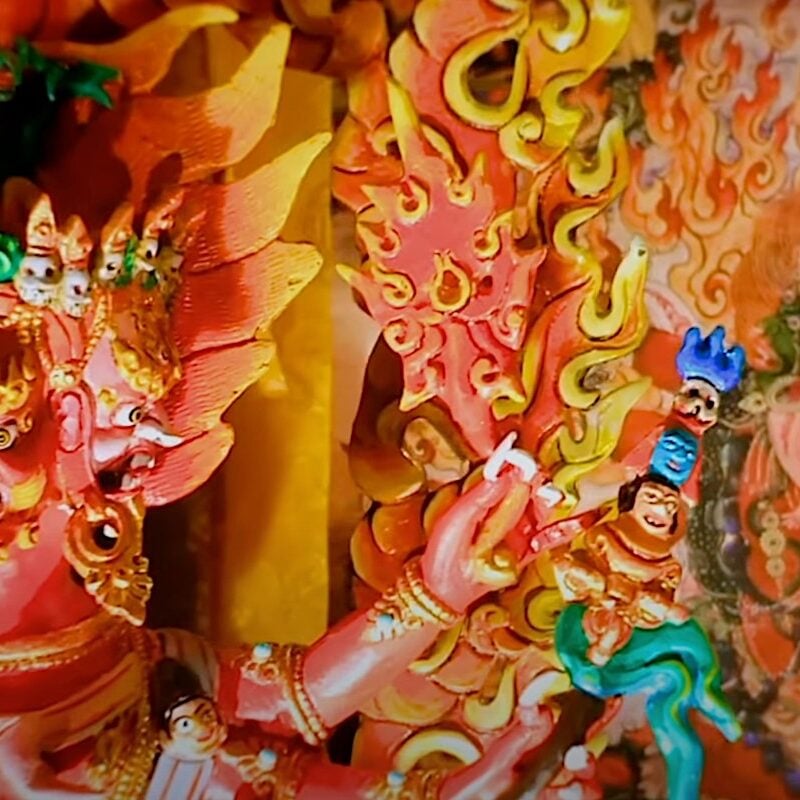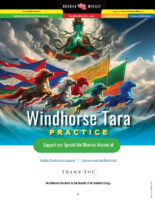How can Kalachakra meditation help to relieve our suffering? Why is Kalachakra considered to be the highest yoga meditational form of Shakyamuni Buddha?
Why is Kalachakra practice recommended by great Buddhist teachers such as the Dalai Lama in these difficult times?
Why is Kalachakra considered to be the highest yoga meditational form of Shakyamuni Buddha?
How can Kalachakra meditation help to relieve our suffering?
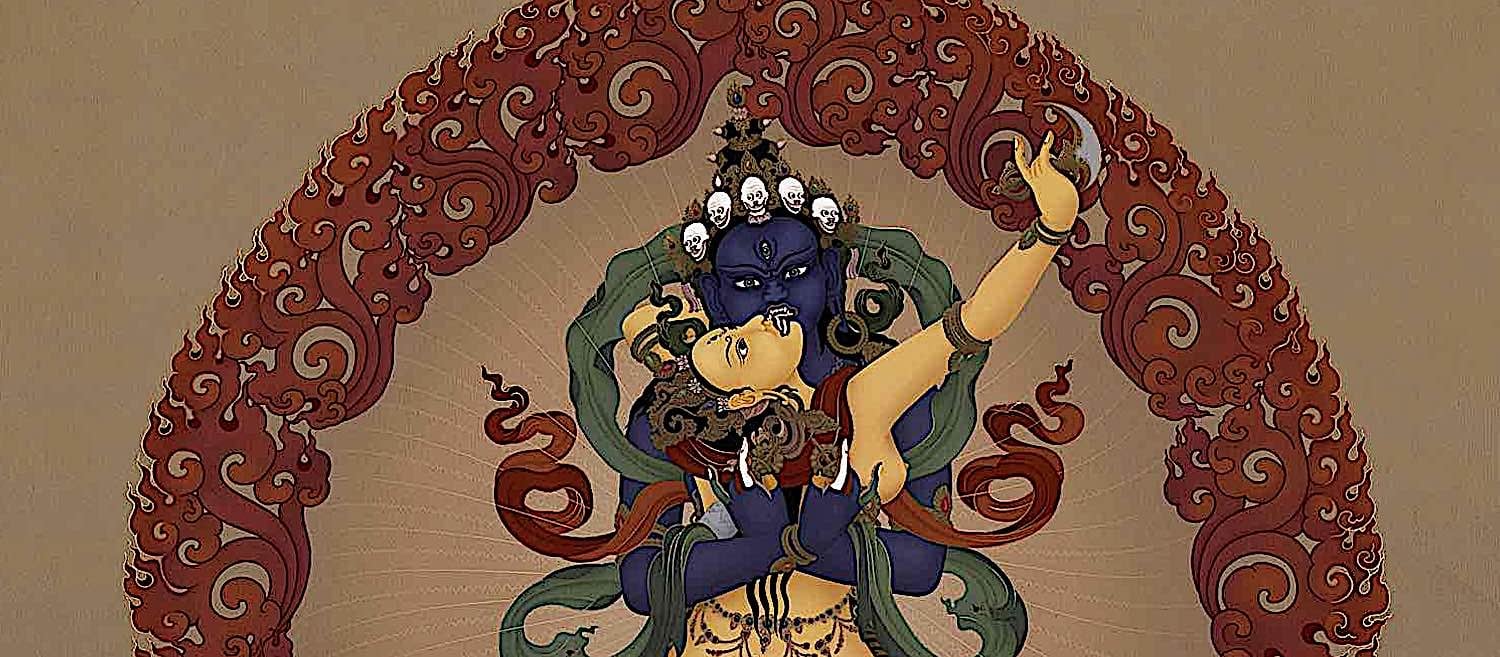
In this time, when wars and disease and economic turmoil arise again in Samsara, Kalachakra is among the most important practices in Vajrayana Buddhism, to help us overcome our many obstacles.
This practice represents none other than the Highest Yoga Practice of the glorious conqueror Shakyamuni Buddha.
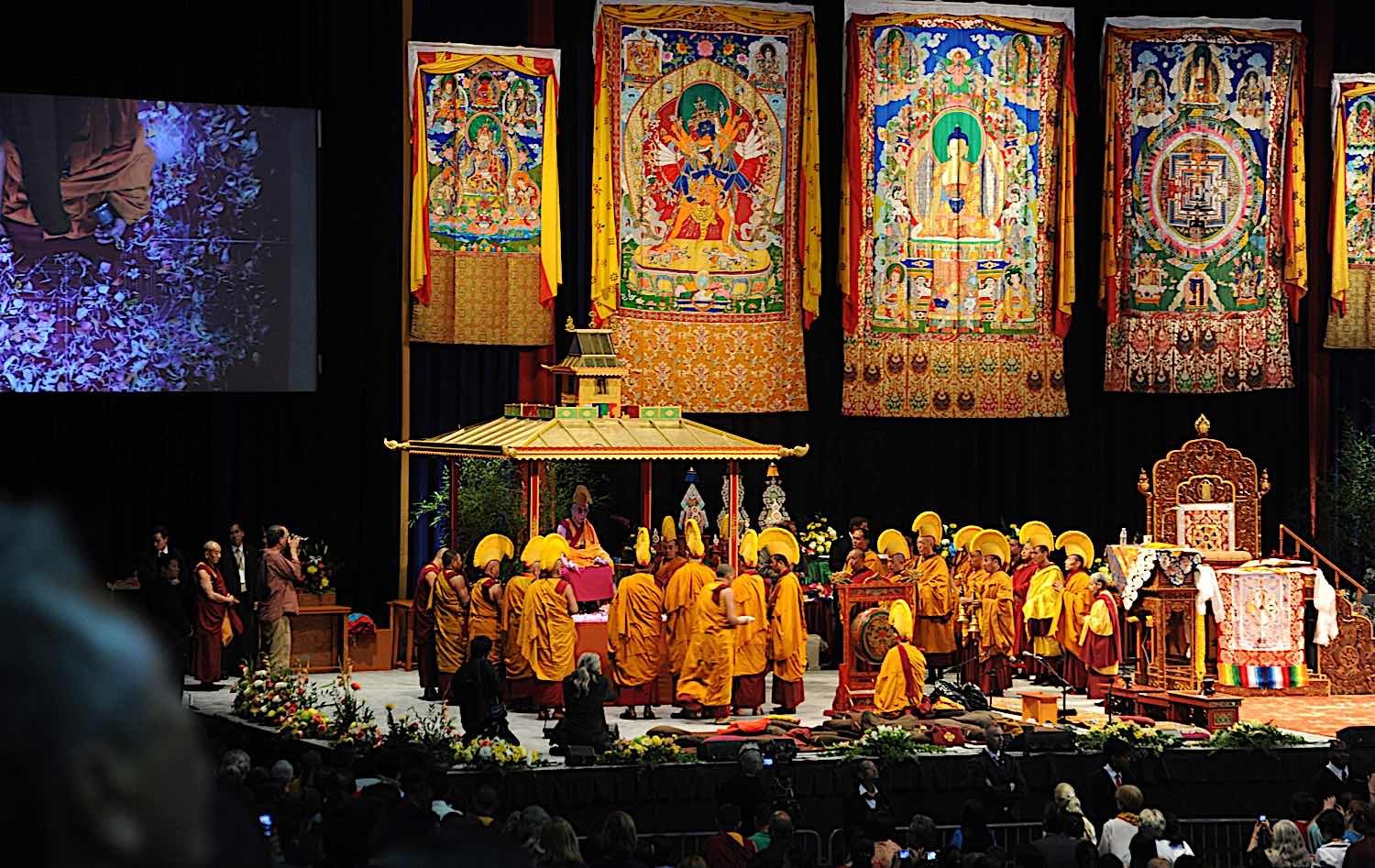
Buddha taught with skillful means
Buddha taught in different ways for a multitude of suffering beings.
In a display of this wonderful Enlightened skill, at the same time Buddha taught skillfully on our “plane of existence” — offering teachings in different ways to different followers, as best suited them — he taught in all planes of existence (time and space being relative and unlimited, after all.) The teachings of the Kalachakra Tantra are his highest teachings, although to achieve profound benefits requires training and a qualified teacher.
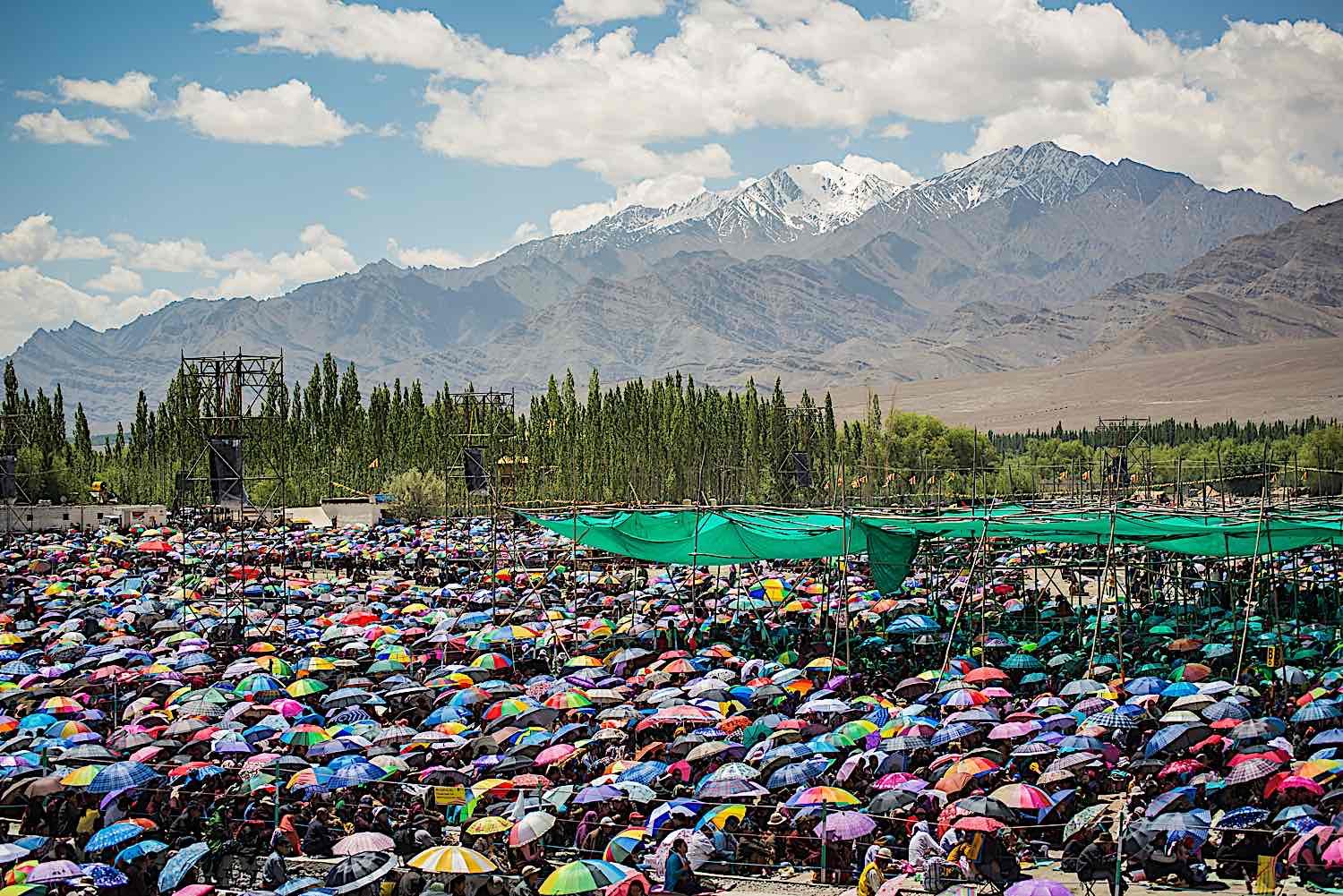
Venerable Zasep Tulku Rinpoche explains:
“Kalachakra deity is an emanation of Buddha Shakyamuni.
He is the opponent of the age of degeneration, Kali Yuga.
Kalachakra revolves around the concept of time (kala) and cycle or wheels.
Kalachakra, in Tibetan Dhukor, means wheel of time, wheel of Samsara turning, wheel of sharp weapons turning, wheel of wars turning and wheel of suffering turning.
At this time, it is important to turn the wheel of holy Dharma.
It is time to practice Kalachakra Tantra.”
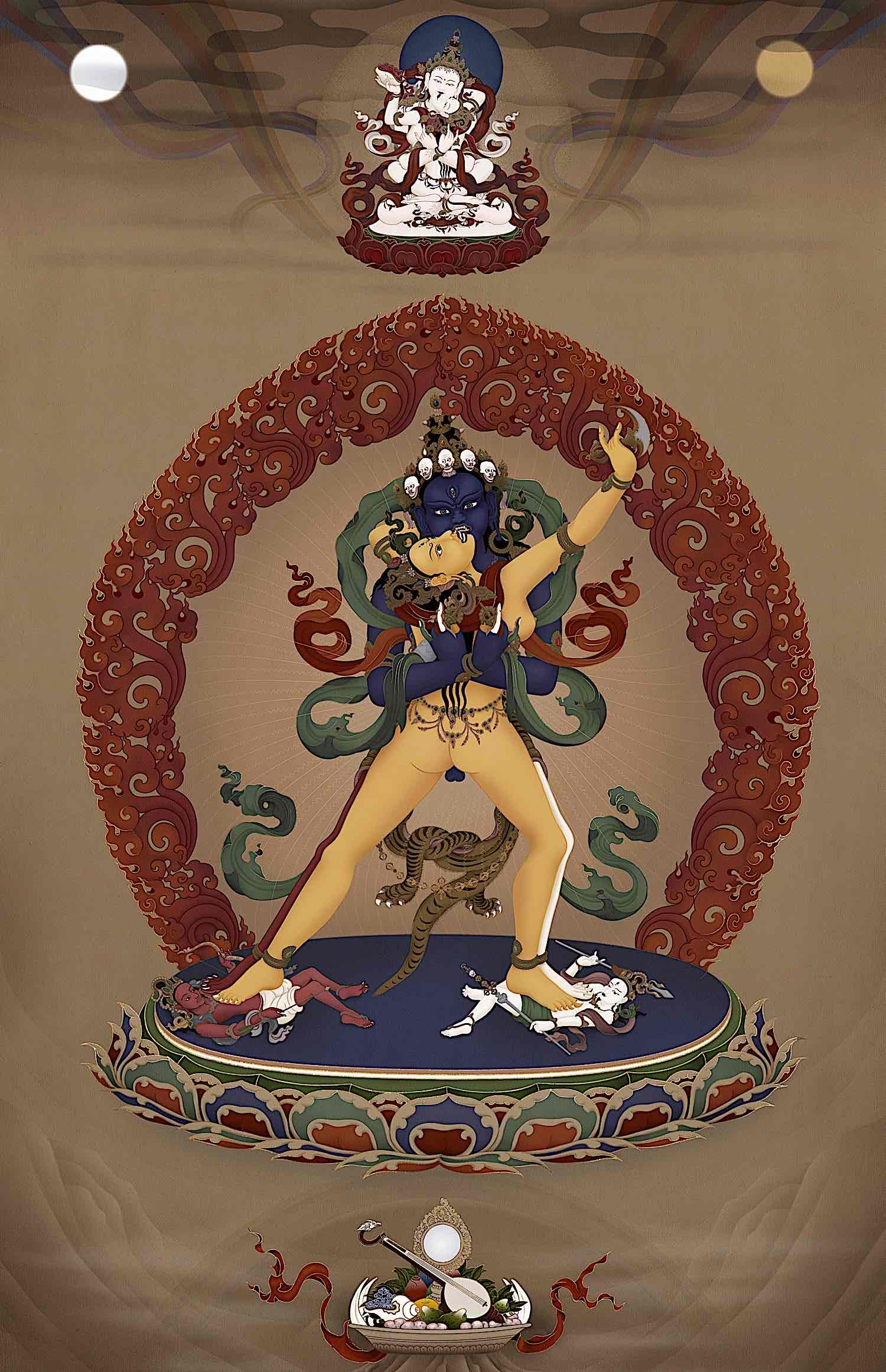
Kalachakra events and His Holiness the Dalai Lama
Kalachakra practice is well known worldwide due to the major teaching events of His Holiness the Dalai Lama, as well as the famous sand mandalas and the popularized Kalachakra symbol seen in art and jewelry.
Despite this level of public awareness, it is one of the least well-understood of practices.
This is not surprising, given the layers of profundity built into the teachings.
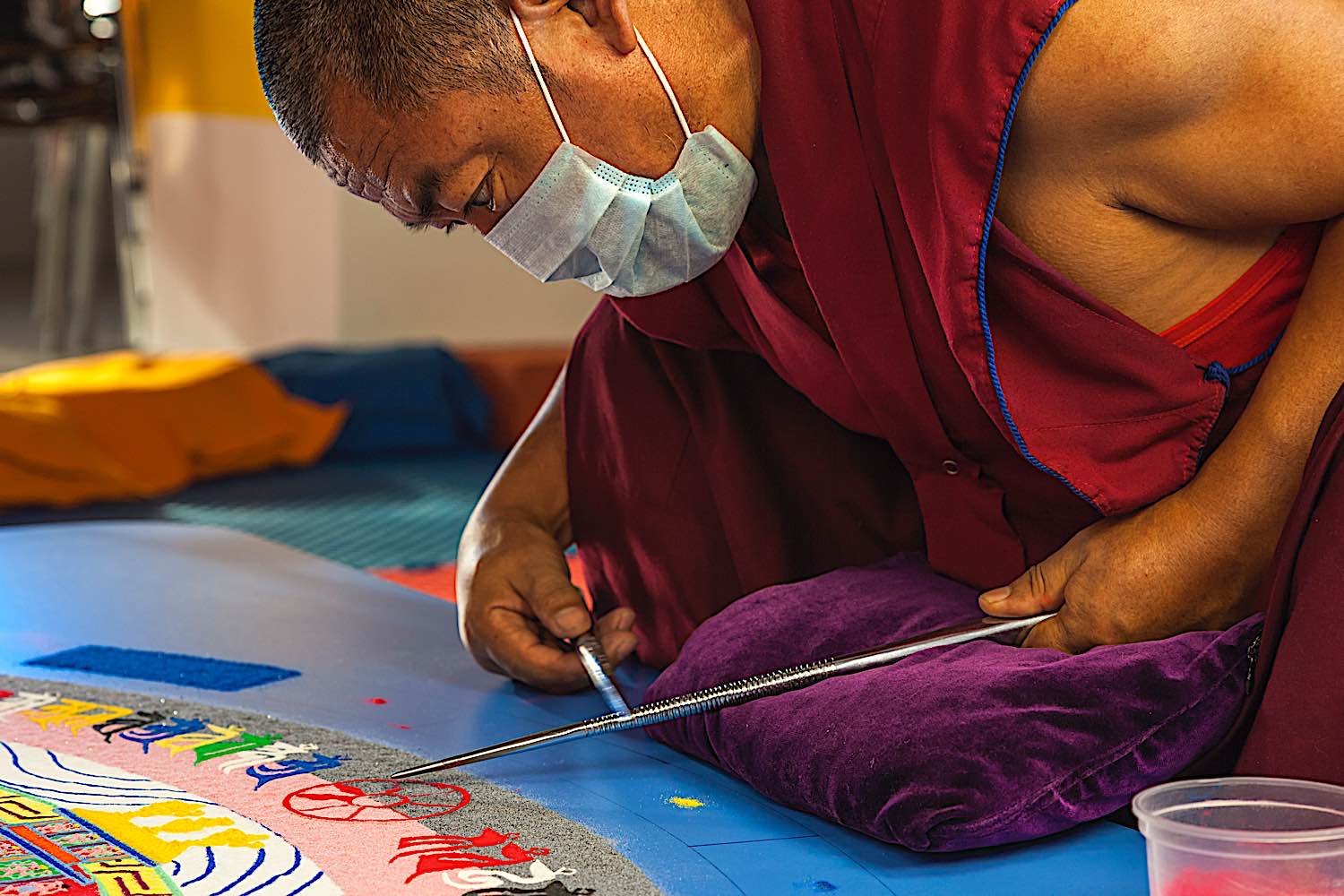
Outer, Inner and Secret Kalacharka
Not only is there “outer, inner and secret” Kalachakra teachings, but it can literally take a lifetime to begin to understand them.
Outer Kalachakra relates to outer phenemon, noteably the 10 planets — which you can read as the entire Universe. This relates directly to the Kalachakra tenfold symbol (see below.)
Inner Kalachakra relates to the inner body — channels and chakras and the complex teachings of the inner world (which definitely requires instruction for meditation.) This also relates to the Kalachakra tenfold symbol (see below.)
Secret Kalachakra embodies the ultimate teachings.
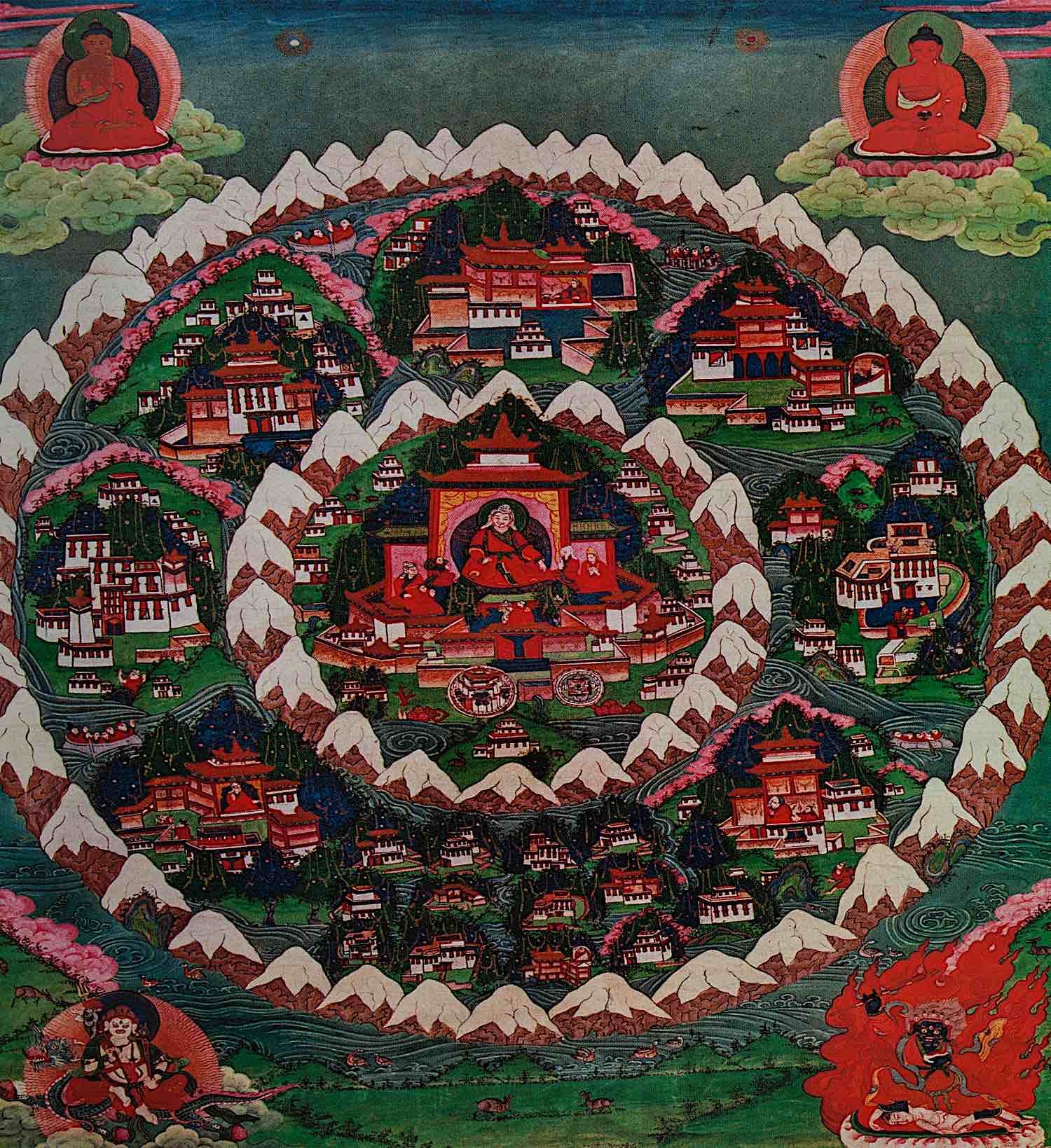
Kalachakra Sahaja Heruka literally translates in English as the Wheel of Time Hero. Kalachakra is one of the most important deities in Vajrayana Buddhism — one that represents the highest form of the Buddha, and a practice that can help us overcome our obstacles.
Kalachakra’s teachings are profound and inspirational, representing a deep understanding of Samsara (the cycle of birth and death) and Nirvana (enlightenment). Kalachakra embodies both these aspects — samsara being represented by his outer body, while nirvana symbolized through his inner body.
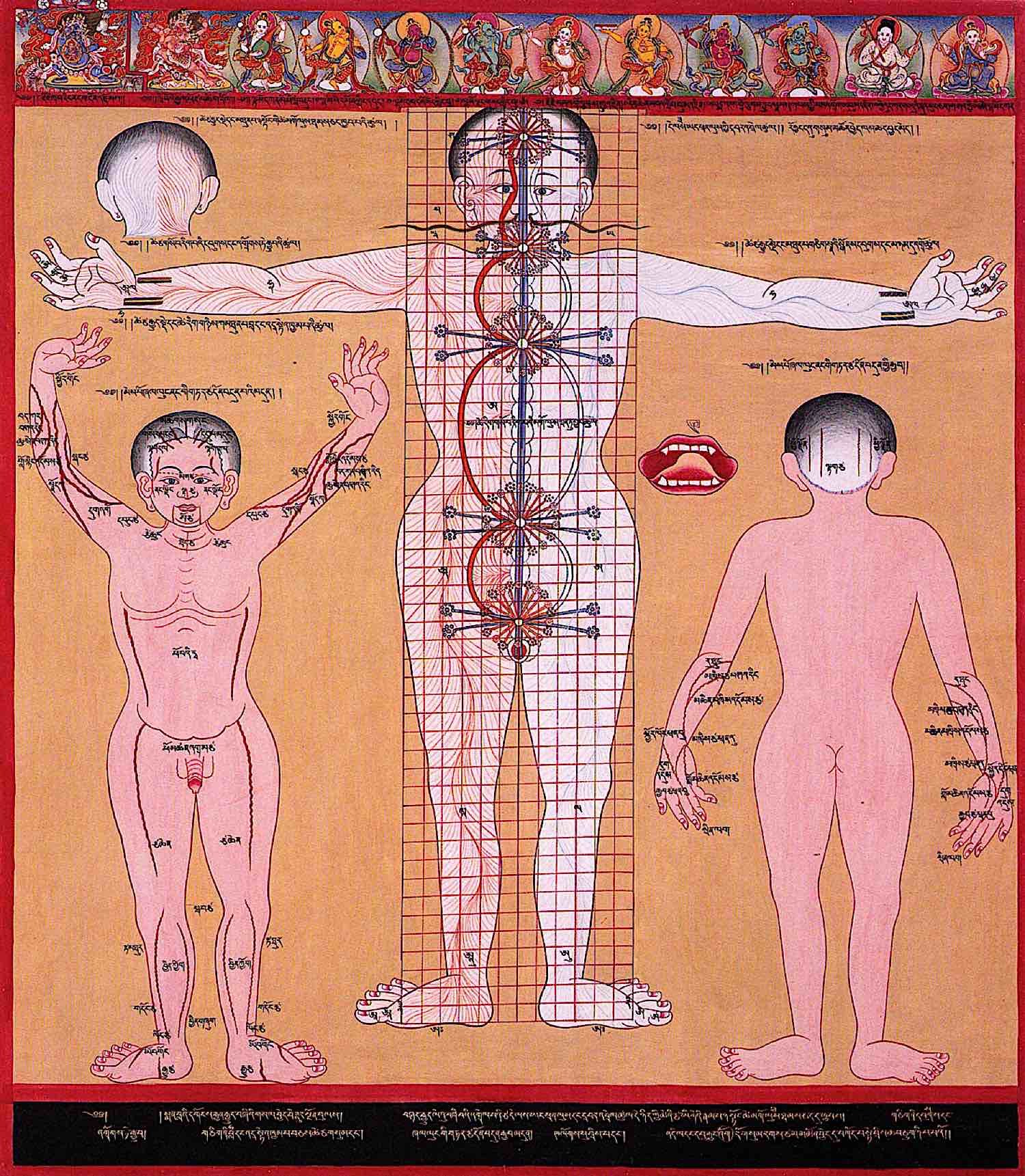
Vajrayana — the importance of visualization
In Vajrayana Buddhism, image perception is an important aspect of meditation. Visualization instantly triggers response in our minds, in the same way as an image in a news story can convey more than simple words. Visualization is a unique aspect of Vajrayana meditation, usually combined with sound in the form of mantras. In some ways, Kalachakra represents the idealized amalgam of all visualized Enlightened Buddha aspects in Vajrayana.
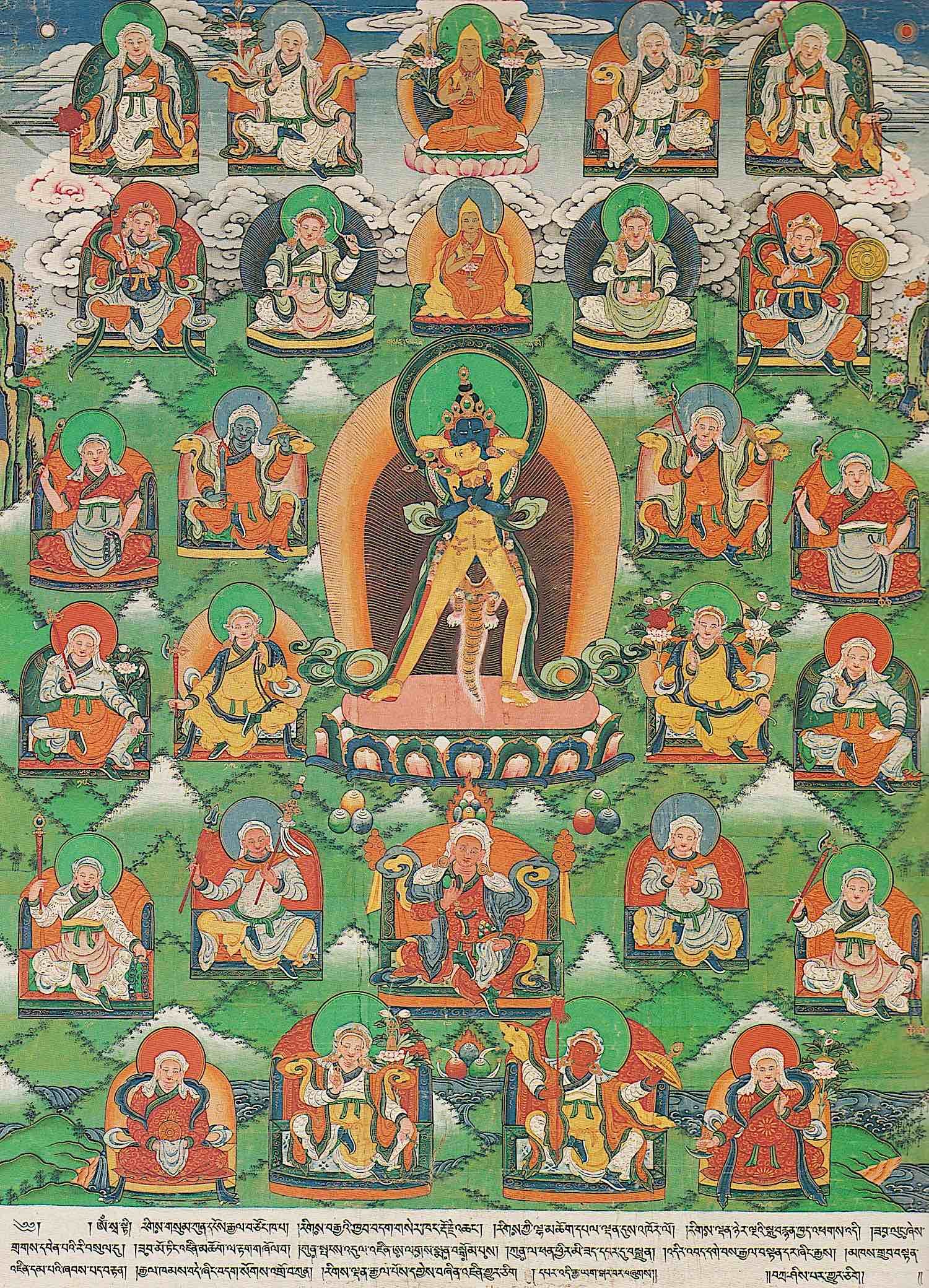
In Vajrayana Buddhism, the symbolized image of union and embrace is represented by the Yab Yum — or the Enlightened symbolic embrace of compassion and wisdom.
What does Yab Yum really represent?
Rather than representing two Enlightened Beings in an embrace, the Yab Yum represents balance, completeness, and the union of the polarities.
Kalach
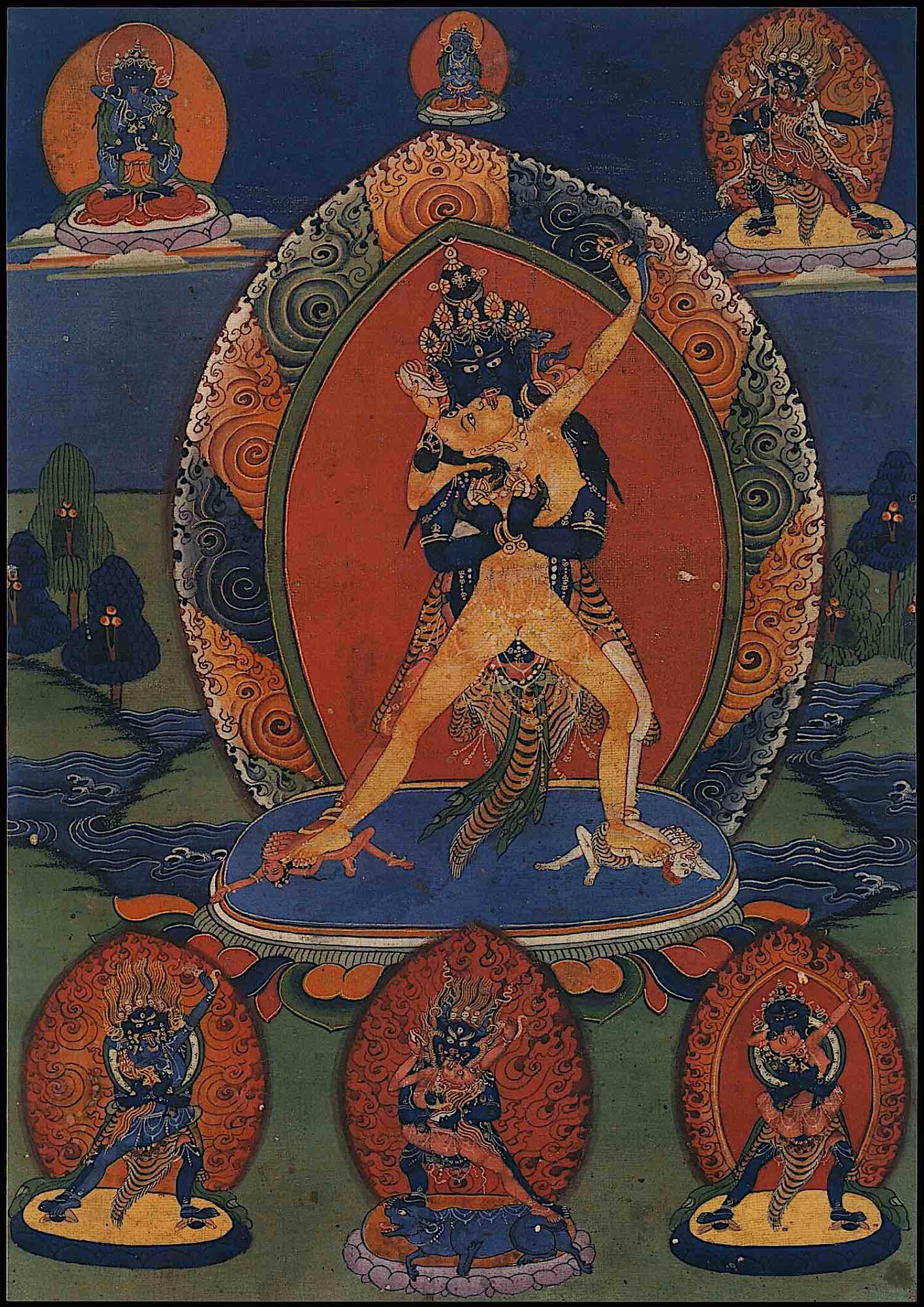
This is in some ways very similar in concept to Daoist Yang Yin. Traditionally Yab, or the male aspect, represents Compassion and Skillful Means while the Yum, or female aspect represents Wisdom. These are considered to be aspects of one being, Kalachakra.
Kalachakra YabYum — even though visualized as male and female — are in essence one.
Just as we, ourselves, are one with Kalachakra.
There is no separation ultimately.
Two-armed Kalachakra Sahaja
The appearance of two-armed Kalachakra Sahaja, as described by the 19th-century teacher Jamyang Wangpo is to be visualized in a specific way:
Kalachakra Sahaja… with a body blue in color, one face, two hands holding a vajra and bell, embracing the Mother.
The left leg is white and bent pressing on white Ishvara and the right red and extended on the heart of the King of Desire.
The hair is in a top-knot and a wishing gem and crescent moon adorn the head; [adorned with] vajra ornaments and wearing a lower garment of tiger skin.
For each hand the thumb is yellow, forefinger white, middle finger red, ring-finger black, little finger green.
For the garland of joints, the first is black, second red, and third white; with Vajrasattva as a crown; and standing in the middle of a five coloured mountain of fire.
Embracing Visvamata, yellow in colour.
[She has] one face, two hands, three eyes, holding a curved knife and skullcup; embracing the Father with the right leg bent, left extended.
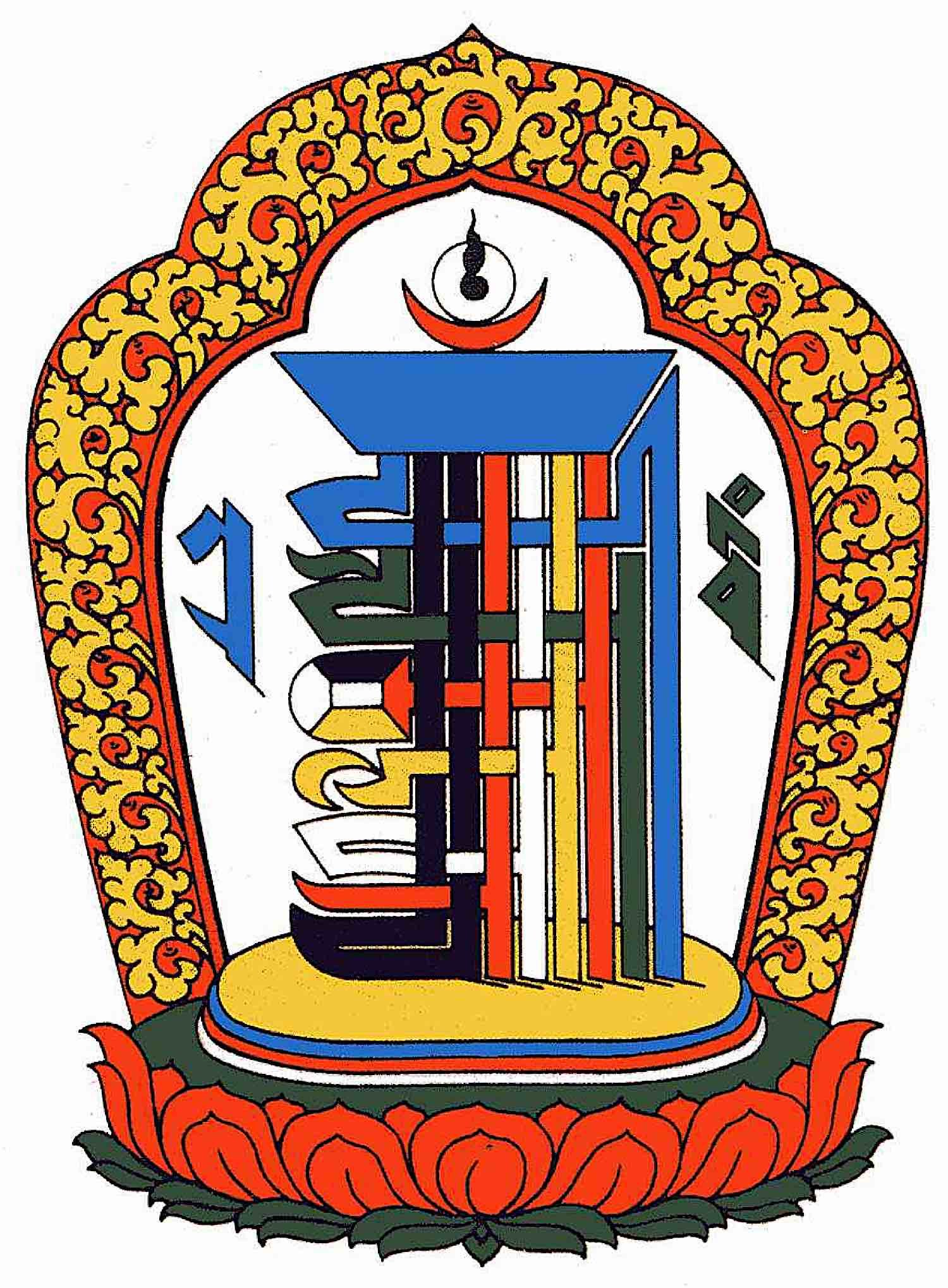
The most famous of the Kalachakra Tenfold Powerful One
The Kalachakra Seed Syllable (rnam bcu dbang ldan) or Tenfold Powerful One is one of the most iconic representations of both the entire Tibetan Tantric tradition, and particularly within its own system; a spectacular combination that starts with an ornamental ring of fire, followed by seven individual syllables in the center symbol. Subsequently crowned with a crescent moon, disc and curved shape to form ten pieces together – this powerful image serves as an awe-inspiring reminder for all who view it.
“Surrounding the main symbol is a kind of frame made of flames, which corresponds to the outermost “Circle of Wisdom” of the mandala.On the left and right of the actual Tenfold Powerful symbol are the Lantsa characters for E and VAM, representing the union of respectively emptiness (E) and bliss (VAM).
The individual syllables are represented in a in a stylized version of Sanskrit Lantsa (or Ranjana) characters. (Lantsa is an Indian Buddhist script, probably of late Pala origin, derived from Sanskrit, although certain scholars date it as late as the seventeenth century. It was used in Nepal until recent history. It is specifically used for mantra syllables and the titles of sacred texts.)
The symbol usually stands on a lotus (which also symbolizes the heart chakra) and three or four discs, like the Kalachakra deity: a white moon disc, a red sun disc, a black/blue Rahu disc and a yellow Kalagni disc. (The Rahu and Kalagni discs are often combined into one black Rahu disc.)” [2]
— from The Tenfold Powerful One, mostly derived from Ven. Kirti Tsenshab Rinpoche’s teachings Bodhgya 1990
The symbol also embodies.
- Aspects of the Outer Kalachakara, like the elements and the ten planets
- Aspects of the Inner Kalachakra, like channels and chakras
- Aspects of the 10 powers, 10 forces, and 10 perfections (paramitas).
Kalachakra’s teachings are especially powerful for anyone seeking to tap into the power of their own inner potential, and ultimately reach enlightenment. Kalachakra’s symbol is a true representation of what lies at the heart of Kalachakra Tantra: unity with all-encompassing compassion and wisdom.
Through visualizing Kalachakra’s symbol, we can come to embody Kalachakra’s teachings in our everyday lives. Kalachakra’s symbol is a potent reminder of the power of meditation and how it can help us on our journey towards ultimate liberation from all suffering.
Transcending challenges with practice, principles, and devotion
This powerful Enlightened deity reminds us that with proper practice and devotion, we can transcend whatever challenges may come our way—and living according to Kalachakra’s principles helps us to create a path towards freedom from all suffering.
Kalachakra offers an inspiring vision for the world — a way to break free from the suffering of our age and achieve lasting peace, harmony, and joy.
Kalachakra is also part of profound logic or wisdom built into Kalachakra Tantra teachings, which are about understanding reality at its deepest levels.
Kalachakra can be seen not only as a deity, but also as a powerful symbol for transformation, offering us guidance in times of struggle.
Kalachakra’s teachings can help us on our journey towards ultimate enlightenment—the highest level of realization. Kalachakra’s profound teachings provide us with vital tools for navigating even the most difficult times in life. He helps us to understand and transcend our challenges while developing an unshakeable faith in the power of our own potential.
Kalachakra’s teachings are powerful for anyone seeking to create a better future for themselves and others.
Kalachakra offers us a path to become our best selves, with the ultimate goal of enlightenment — an end to all suffering and liberation from the cycle of birth and death.
May we all find inspiration in Kalachakra’s teachings and make his profound wisdom part of our lives.
NOTES and CITATIONS
[1] Himalayan art feature “Kalachakra (Buddhist Deity) – Sahaja (1 face, 2 hands)
More articles by this author

Guru Rinpoche is ready to answer and grant wishes: “Repeat this prayer continuously” for the granting of wishes

VIDEO: Vajrapani Vajra Armor Mantra: Supreme Protection of Dorje Godrab Vajrakavaca from Padmasambhava
Search
Latest Features
Please support the "Spread the Dharma" mission as one of our heroic Dharma Supporting Members, or with a one-time donation.
Please Help Support the “Spread the Dharma” Mission!

Be a part of the noble mission as a supporting member or a patron, or a volunteer contributor of content.
The power of Dharma to help sentient beings, in part, lies in ensuring access to Buddha’s precious Dharma — the mission of Buddha Weekly. We can’t do it without you!
A non-profit association since 2007, Buddha Weekly published many feature articles, videos, and, podcasts. Please consider supporting the mission to preserve and “Spread the Dharma." Your support as either a patron or a supporting member helps defray the high costs of producing quality Dharma content. Thank you! Learn more here, or become one of our super karma heroes on Patreon.
Lee Kane
Author | Buddha Weekly
Lee Kane is the editor of Buddha Weekly, since 2007. His main focuses as a writer are mindfulness techniques, meditation, Dharma and Sutra commentaries, Buddhist practices, international perspectives and traditions, Vajrayana, Mahayana, Zen. He also covers various events.
Lee also contributes as a writer to various other online magazines and blogs.






